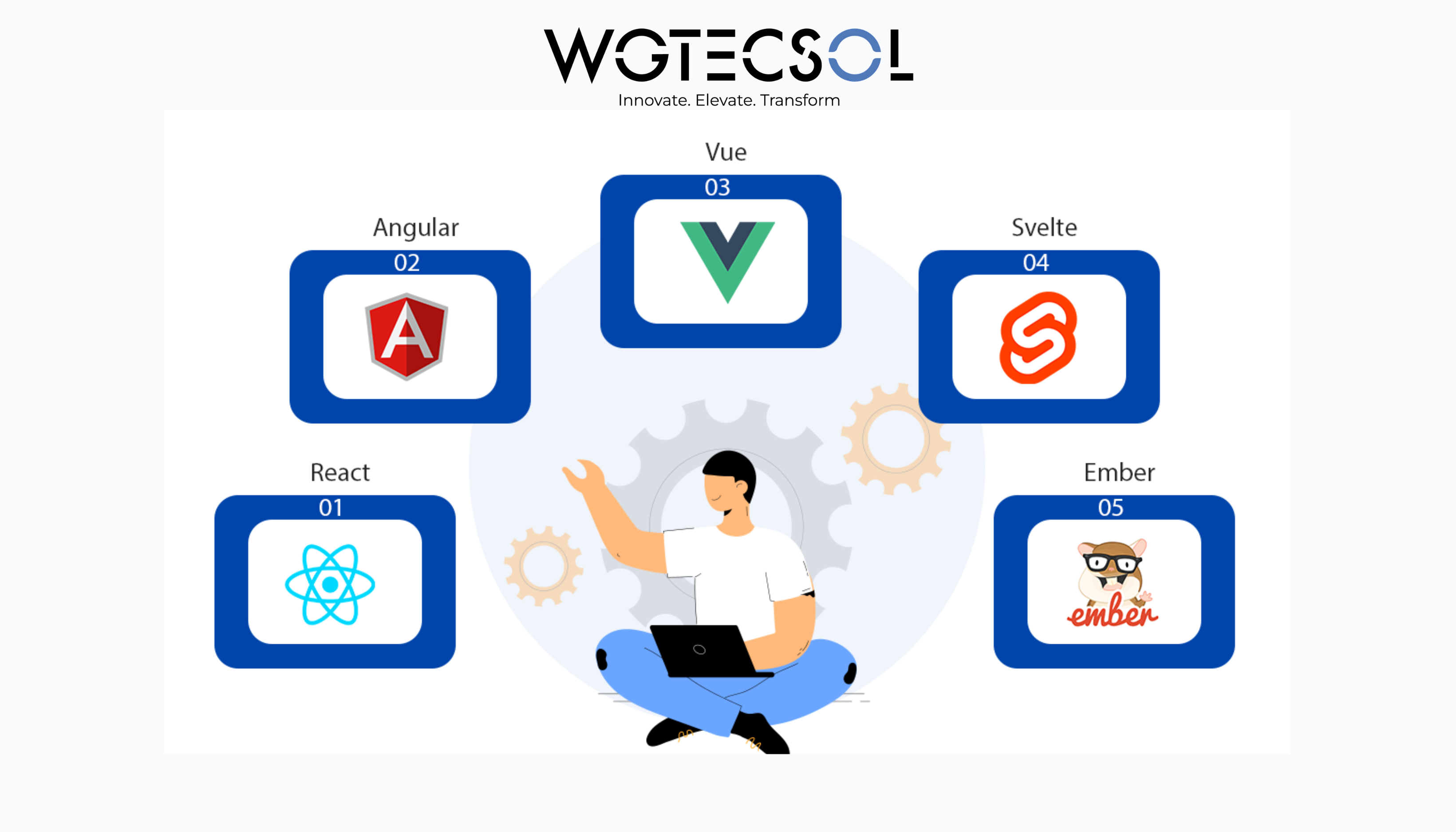Top 5 Frontend Frameworks in 2025

Top 5 Frontend Frameworks in 2025: A Developer�s Guide
Explore the Best Tools Developers Are Using Today
Frontend development has advanced significantly over the last decade, and as we approach 2025, developers have more powerful tools than ever to create fast, responsive, and interactive web applications. Choosing the correct frontend framework is critical for improving performance, preserving code quality, and effectively growing your project.
Here is an analysis of the top five frontend frameworks dominating 2025, as well as what distinguishes them in the present development ecosystem.
1. React.js: The Leader of the Pack
Backed by: Meta (previously Facebook)
React�s component-based architecture and constant enhancements will keep it the leading choice for many developers in 2025. Building highly interactive UIs has become easier and faster thanks to recent improvements such as React Server Components and concurrent functionalities. Its widespread adoption and community support make it a secure and forward-thinking choice for large-scale applications.
Ideal for: Interactive web apps, SPAs, and mobile apps (via React Native).
2. Vue.js: Simple Yet Powerful
Developed by: Evan You and the open-source community
Vue�s popularity has steadily increased due to its clear syntax and developer-friendly features. Vue 4 will include improved TypeScript support, faster speed, and enhancements to the Composition API by 2025. It�s an excellent alternative for both novices and pros looking for a simple, adaptable foundation without sacrificing power.
Ideal for: Admin dashboards, eCommerce websites, and lightweight apps.
3. Svelte: Redefining Performance
Created by: Rich Harris
Svelte adopts an unusual approach, transferring much of the effort to compile time rather than the browser. The result is ultra-fast apps with low overhead. Svelte 5 includes smoother animations, improved development tools, and increased reactivity, making it a fantastic choice for developers that value speed and simplicity.
Used for: Performance-critical apps, highly interactive websites, mobile-first designs.
4. Next.js: Fullstack Features in One Package
Built on: React
Next.js continues to lead the fullstack space in 2025, offering a comprehensive toolkit for building fast and scalable web applications. Version 14 features improvements to streaming, caching, and edge rendering. It also includes built-in routing, API support, and hybrid rendering�all with minimal configuration.
Popular in: SaaS products, blogs, enterprise platforms, and dynamic websites.
5. Angular: Strong and Structured
Developed by: Google
Angular excels in applications requiring strong structure and scalability. Angular 17 adds zoneless change detection and improved SSR features. Its CLI, dependency injection system, and RxJS integration continue to make it a robust enterprise choice.
Best for: Enterprise apps, complex dashboards, and internal tools.
Conclusion
Frontend development in 2025 provides a diverse set of tools, each adapted to certain requirements. React leads in flexibility, Vue strikes a compromise between ease and strength, Svelte pushes performance limits, Next.js unifies full-stack development, and Angular offers a powerful solution for enterprise applications.
Your framework selection should be based on the scale of your project, the performance requirements, and your team�s skills. Regardless of which one you choose, learning any of these top contenders will keep you competitive and capable in the rapidly changing web scene.